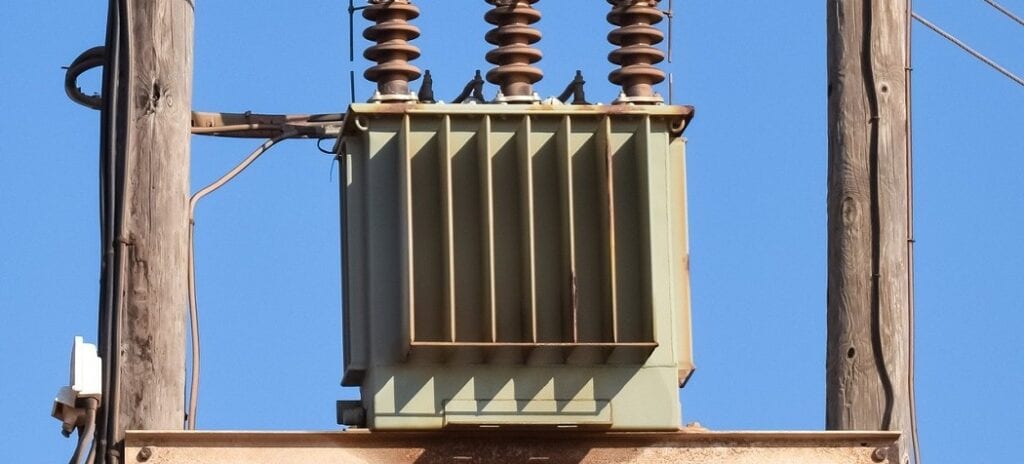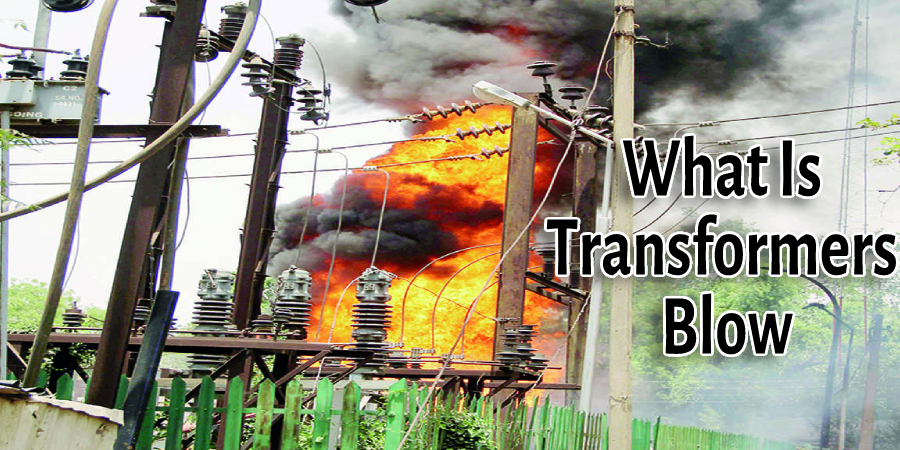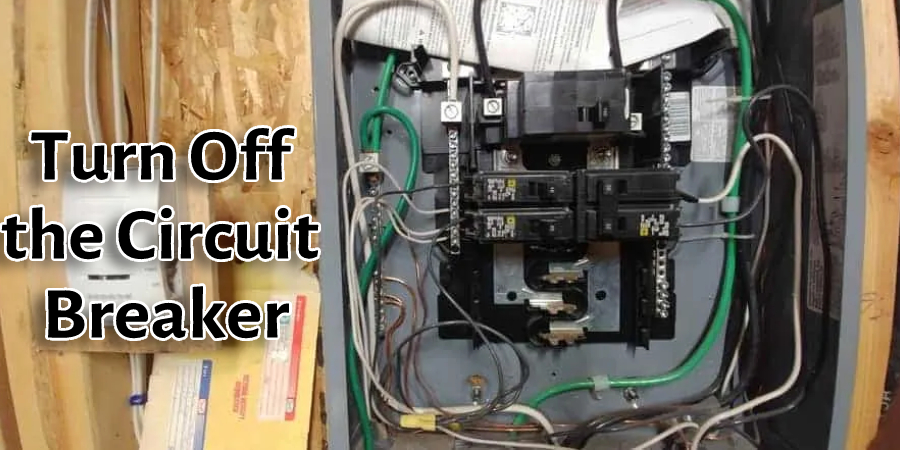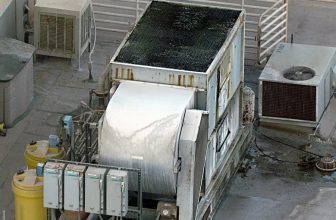How Long Does It Take to Fix a Blown Transformer
Many people have no idea how long does it take to fix a blown transformer, and that is understandable. With all the different types of electrical equipment out there, this can be a difficult question to answer. However, if you are at your wit’s end because your transformer has been on the fritz for a while now, we will help shed some light on this topic!

What is a Blown Transformer?
A blown transformer is essentially an electrical transformer that has been damaged and is no longer able to function properly. These transformers are a crucial part of the power grid, as they help transfer electricity from high-voltage power lines to lower-voltage distribution lines for homes and businesses.
There are various reasons why a transformer can blow, including weather-related damage (such as lightning strikes or high winds), power surges, and equipment failure. When a transformer blows, it can cause power outages and disrupt the flow of electricity to homes and businesses. This is why it is crucial for these transformers to be fixed promptly.
The Process of Fixing a Blown Transformer
The time it takes to fix a blown transformer can vary depending on the severity of the damage and other external factors. However, in general, the process typically involves the following steps:
Identifying the Problem:
The first step in fixing a blown transformer is identifying the problem. This can be done through various methods, such as visual inspection, diagnostic testing, and monitoring equipment. Once the issue has been identified, the repair process can begin.
Assessing the Damage:
After identifying the problem, the next step is to assess the damage. This involves determining which components of the transformer have been affected and the extent of the damage. This will help technicians determine the best course of action for repairs.
Repairing or Replacing Components:
Once the damage has been assessed, technicians can begin repairing or replacing any damaged components. This may involve replacing wires, fuses, and other parts that have been affected by the blown transformer.

Testing and Monitoring:
After the repairs have been made, the transformer will undergo testing and monitoring to ensure that it is functioning properly. This step is crucial as it ensures the safety and reliability of the repaired transformer.
Why Do Transformers Blow?
Transformer failures are a frequent occurrence. There are various reasons that transformers can blow, including bad design and negligence in the installation process. In addition, transformers fail when they suffer too much electrical stress or mechanical strain during normal operation. It’s not uncommon for engineers to assign an MTBF (Mean Time Between Failures) rating to transformer manufacturing lines.
A transformer’s life is finite, and it will eventually fail. The three main causes for a failure are an overload on the system, a bad design that creates excessive stress in certain spots, or improper installation/wiring. Transformers may also blow when they run out of cooling water because this can lead to localized overheating, damaging the insulation.
The life expectancy of a transformer depends on the type and quality. For instance, if it is new or high-quality, an overload may last for several hundred cycles before failing, whereas in older equipment, this could be fewer than 20 cycles. Transformers are typically rated as Class 100 at 75% capacity (CSA C22) vs. Class 200 at 50% capacity (CSA C22).
Needed Materials:
You’ll Need:
Power Saw:
To cut the damaged conductors.
Wire Cutters:
This is for cutting wires and other components during repairs.
Screwdrivers:
Removing screws and opening up the transformer for repair.
Replacement Parts:
This includes fuses, wires, and any other components that need to be replaced.
Protective Gear:
Due to the potential hazards involved with handling electricity, protective gear such as gloves, goggles, and insulated tools are essential.
With these materials, the repair process can be carried out safely and efficiently. You may also need the help of a trained professional for more complex repairs. It is always best to have a professional handle any electrical repairs for safety reasons.
You should now have a better understanding of the process and materials needed to fix a blown transformer. Remember, the time it takes to repair a blown transformer can vary, but prompt action is crucial to minimizing disruptions in power supply and preventing further damage. If you ever find yourself dealing with a blown transformer, it is best to contact a professional electrician for assistance.

How Long Does It Take to Fix a Blown Transformer
Blown transformers can be fixed by replacing the transformer with a new one. This usually takes less than an hour to complete and will require you to shut off power from your home before beginning work on it, so you don’t get shocked.
If you need to fix a blown transformer, you can hire a professional technician who specializes in transformer repair, or you can follow the steps mentioned below to get started on your repairs.
Step One:
The first thing you’ll want to do is turn off the circuit breaker for the blown transformer area, then cut away any wires attached to it using wire strippers or a utility knife. Once this has been done, there should only be two cables and a grounding cable going into the box below. Cut these cables into short lengths from the top or bottom.
You can then use a flathead screwdriver to bend the clips on the blown transformer away from the box to remove it. Once this is done, you’ll want to take out your replacement transformer and set it in place.
Step Two:
Next, disconnect each of these three pieces from their connections to access everything inside without damaging any other areas that are still active within your electrical system. When you’re done, reattach these three pieces to the new transformer.
It is important to note that fixing a blown transformer can be dangerous, and it should only be done by trained professionals. This is because transformers carry high voltages, and if not handled properly, it could result in injury or even death.
Step Three:
After the three pieces have been disconnected, lift them out of the way so you can remove the cover to expose its insides. Then, make sure to clean any dirt and debris from the interior before installing your new transformer. Once you have completed these steps, reattach the cover.
But remember that not all blown transformers can be fixed in this way. If the damage is too severe, it may require a complete replacement of the transformer, which could take longer to fix.
Step Four:
Next, find and replace all blown fuses with new ones before plugging in your replacement transformer. Once this has been done, put everything back together by reversing the steps taken to take it apart. Finally, make sure to test the transformer to ensure it is functioning correctly.
You can test the transformer using a multimeter, which will measure the voltage output. If everything is in working order, you should see a reading close to the transformer’s rated voltage.
Step Five:
Once everything has been put back together, turn on the circuit breaker for the blown transformer area and test to see if it is working properly. If not, you may need to go through the steps again or seek professional help. It is essential to ensure the transformer is functioning correctly to avoid any potential hazards.
You can also consider performing regular maintenance checks on your transformers to prevent any potential issues or catch them early on. This can help extend the lifespan of your transformers and save you from costly repairs in the future.
Step Six:
If the transformer needs to be replaced entirely, this process can take a bit longer as it involves purchasing a new transformer and installing it in place of the old one. It is recommended that you seek professional help for this process.
It is crucial to address any blown transformers as soon as possible to avoid any potential safety hazards or power outages. Whether you choose to hire a professional technician or handle the repairs yourself, it is essential to ensure the transformer is functioning correctly before turning on the power again.
Step Seven:
After the new transformer has been installed, it will need to be tested and monitored to ensure that it is functioning properly. This may involve checking the voltage output, current levels, and conducting thermal scans to detect any potential issues.
Regular monitoring and maintenance can help prevent future blown transformers and ensure your electrical system runs smoothly. In addition, it is crucial to follow proper installation procedures to avoid any potential damage to your transformer.
Step Eight:
In some cases, additional repairs may be necessary after a blown transformer has been fixed or replaced. This may involve replacing damaged wires or other components that were affected by the initial damage.
You should also consider conducting a thorough inspection of your electrical system to identify any potential risks that could lead to blown transformers in the future. This can help prevent similar issues from occurring and ensure the safety and reliability of your electrical system.
Step Nine:
Lastly, it is important to take preventative measures to avoid future blown transformers. This may include regular maintenance checks and addressing any potential issues before they become bigger problems. Additionally, it is essential to follow safety guidelines and best practices when handling electrical equipment to prevent accidents and damage.
Overall, the time it takes to fix a blown transformer can vary depending on the severity of the damage. It could take less than an hour for minor repairs or longer for complete replacements. It is crucial to always prioritize safety and seek professional help if needed when dealing with blown transformers. Regular maintenance checks and proper handling of electrical equipment can also help prevent any potential issues in the future.
Following these steps and taking proper precautions can help ensure the safety and functionality of your electrical system and prevent any potential hazards or power outages. So, it is essential to address blown transformers promptly and handle them with caution to avoid any further complications.
Things to Keep in Mind:
- Always prioritize safety when handling blown transformers.
- Seek professional help if you are not trained or experienced in working with electrical equipment.
- Regular maintenance checks can prevent future issues and extend the lifespan of your transformers.
- Proper installation procedures should be followed to avoid any potential damage to your transformer.
- Conduct a thorough inspection of your electrical system after fixing a blown transformer to identify any potential risks.
- Take preventative measures to avoid future blown transformers, such as regular maintenance checks and following safety guidelines.
- In case of severe damage, a complete replacement may be necessary and could take longer to fix.
- Always test the transformer after making repairs or replacements to ensure it is functioning correctly.
- If you are unsure or uncomfortable with handling blown transformers, it is best to seek professional help. So, never hesitate to ask for assistance when dealing with electrical equipment.
Frequently Asked Questions:
Q: How do you fix a Blown Transformer?
A: There are a few ways. For example, you can replace the blown transformer with another one or attach an ammeter between two wires to see if the current is flowing through them. Then, use that information to identify where there may be a short in your circuit board. This will allow you to zero in on the problem area.
If a blown transformer is damaged or too old, it can be replaced with another one. Alternatively, if you have experience working with electrical equipment and feel confident in your troubleshooting skills, you can try to fix the blown transformer yourself by following the steps mentioned earlier.
Q: Can a Blown Transformer Be Repaired?
A: It depends on the extent of the damage and the expertise of the technician. In some cases, a blown transformer can be repaired by replacing damaged components. However, if the damage is extensive or beyond repair, it may need to be replaced with a new one.
You can also consider contacting the manufacturer of the transformer for repair services or seeking help from a professional technician who specializes in transformer repairs. It’s important to note that tampering with electrical equipment can be dangerous and should only be done by trained individuals.
Q: What Happens if a Transformer Explodes?
A: This can be dangerous, so you should turn off the power immediately if this happens. If there is any chance that a transformer has been damaged and needs to be replaced, do not touch it yourself; call an electrician instead.
You should also take precautions to ensure your safety, such as staying away from the explosion site and wearing protective gear if necessary. It’s important to have a professional assess the damage and make repairs or replacements as needed.
Q: How Do I Know if My Transformer Needs Replacement?
A: Sometimes you might need a new transformer because it has been overheated and damaged from being left on too long or plugged into the wrong voltage outlet. Other times, just replacing fuses can be enough of a fix for blown transformers that may not have serious damage.
Thoroughly inspecting the transformer for any physical damage or signs of wear and tear can also help determine if a replacement is necessary. It’s important to regularly maintain and check your transformers to ensure proper function and prevent potential failures. Additionally, consulting a professional technician can provide further insight into whether a replacement is needed based on their expertise and experience.
Q: How Can You Prevent a Transformer From Exploding?
A: This is a difficult question because it depends on the transformer and its history. However, using proper voltage outlets and checking for signs of damage like overheating can help prevent your transformer from exploding in the first place. Regular maintenance and inspections can also help identify any potential issues before they become major problems.
Additionally, following safety precautions such as turning off the power before working on your transformer and seeking professional help when needed can also prevent accidents and explosions from occurring. It’s important to be cautious and diligent in maintaining and operating transformers to ensure safe and efficient performance.
Overall, handling blown transformers requires caution and proper training to prevent any further damage or hazards. Regular maintenance checks, prompt addressing of issues, and seeking professional help when needed are crucial steps in ensuring the safety and functionality of your electrical system.
By following these guidelines and being proactive in identifying potential problems, you can prevent future blown transformers and maintain a safe electrical system. So, always prioritize safety and take the necessary precautions when dealing with electrical equipment.
Conclusion:
We know you are wondering how long does it take to fix a blown transformer. The answer is that it will depend on the severity of the damage and what needs replacement, but in general, most problems can be fixed within 24 hours or less!
If you have a blown transformer, be sure to call an electrician as soon as possible. The longer you wait, the worse it will get and it can lead to more expensive repairs in the future.
You may read also: How To Run Low Voltage Wire Under Sidewalk




